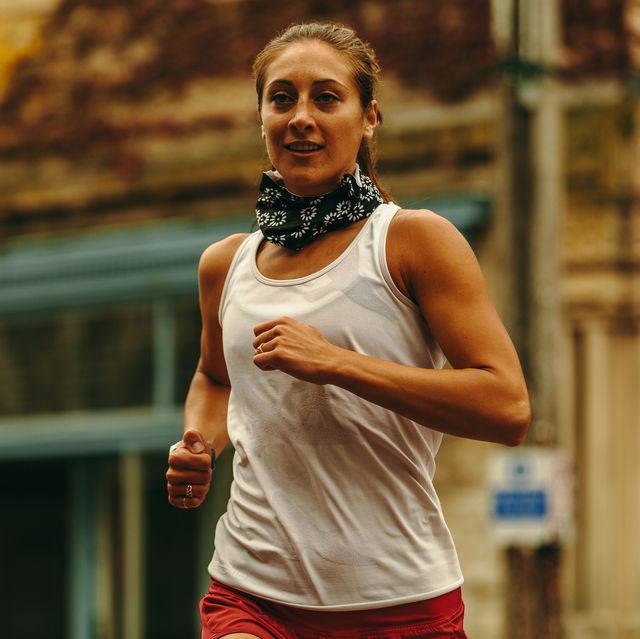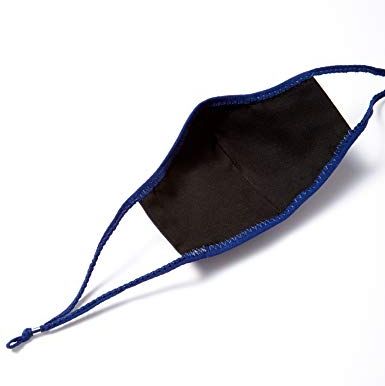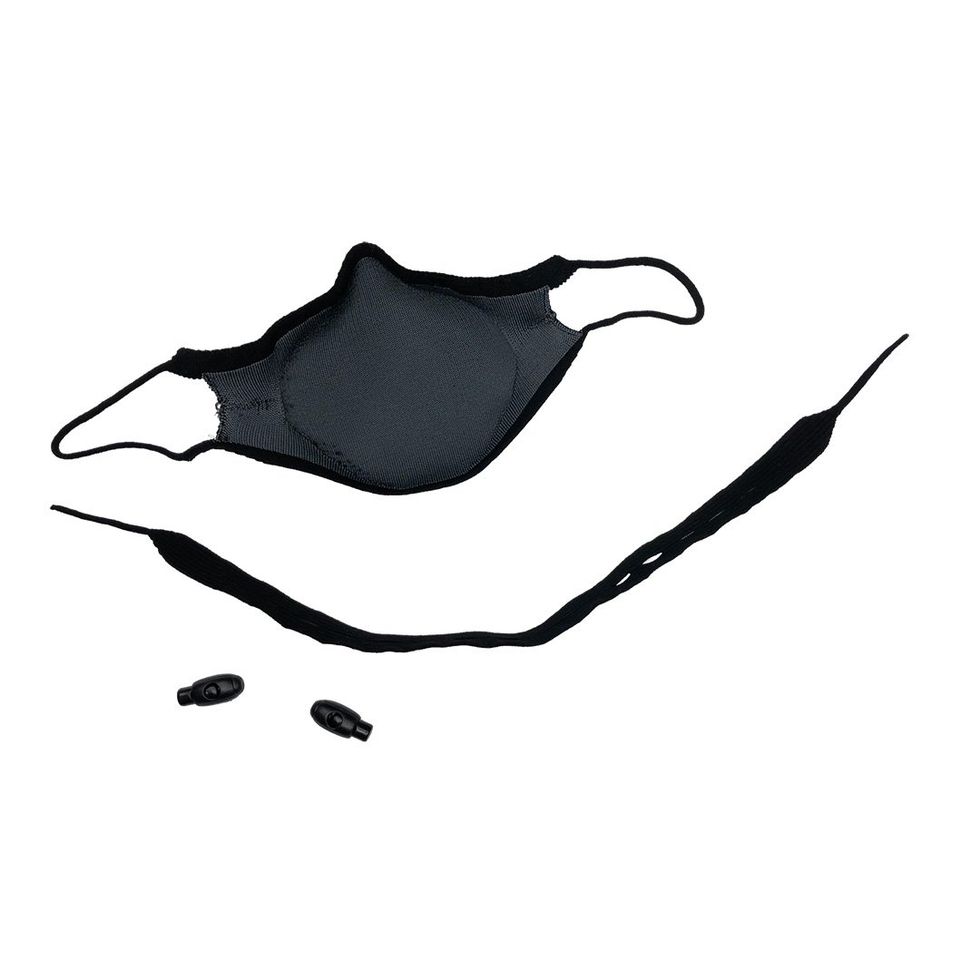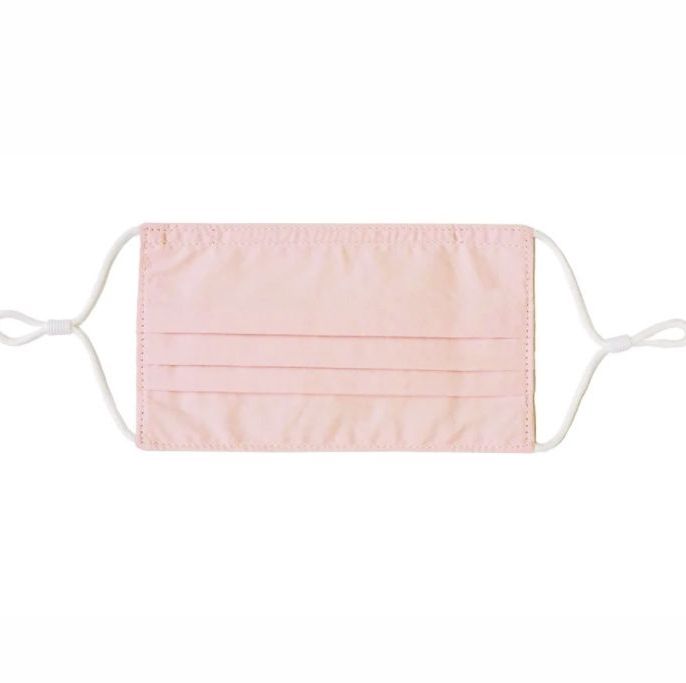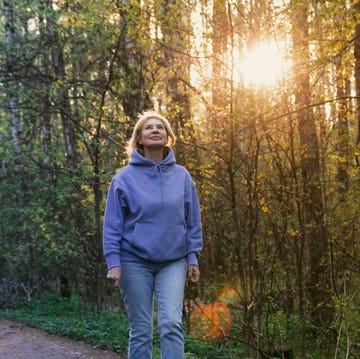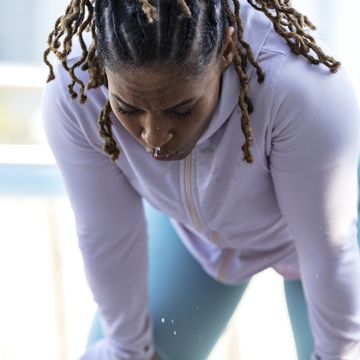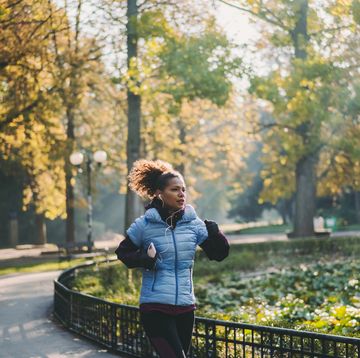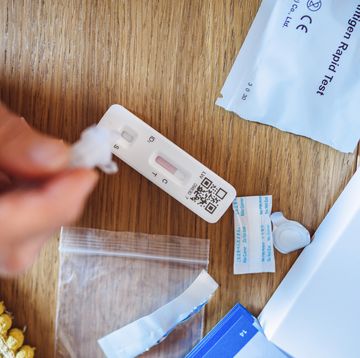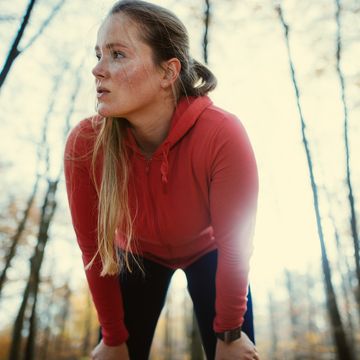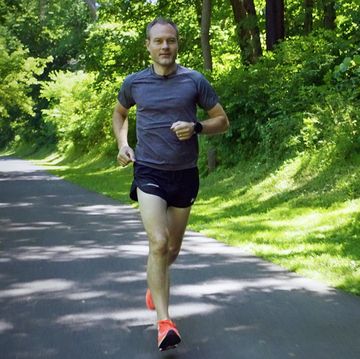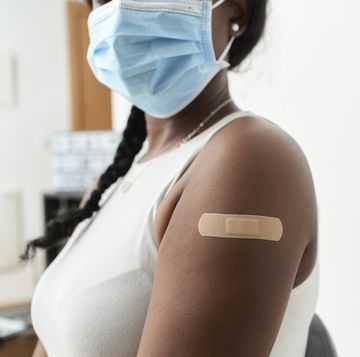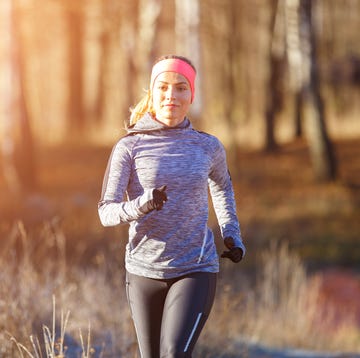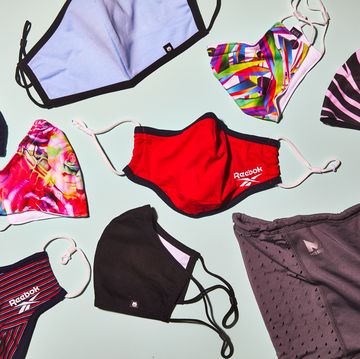- The Centers for Disease Control (CDC) announces new guidelines that state you don’t need to wear a mask outdoors if you’re running on your own or with members of your household. If you are not vaccinated, you should continue to wear a mask in crowded outdoor settings and venues, such as a race, but if you are fully vaccinated, you can safely go maskless when outdoors.
- The guidelines also state that unvaccinated people should continue wearing a mask during indoor activities, including going to the gym or to a workout class. However, if you are fully vaccinated, you can safely participate in an indoor exercise class without a mask.
- It’s best to still bring a mask with you on a run in the case of an emergency or unplanned event. Masks are still required indoors at health care facilities and at certain businesses.
Yearning for a run without worrying about a mask? The time has come.
According to new guidelines from the Centers for Disease Control (CDC), you don’t need to wear a mask outdoors if you’re walking, running, biking, or hiking on your own or with members of your household, whether you’re fully vaccinated or not. If you are not fully vaccinated, you need to continue to wear a mask in certain crowded settings and venues, such as a race.
However, those who are fully vaccinated can go without a mask in any outdoor setting—such as dining at an outdoor restaurant, or attending a crowded, outdoor event—even if there are unvaccinated people in attendance.
Previous guidance advised wearing a mask in any public setting, even outdoors, unless you were exercising solo in an area where you could maintain ample distance from others.
In a chart ranking the safety of numerous activities, the CDC now indicates that running or walking outside is among the safest activities you can do right now. Other activities, particularly those held indoors (including going to the gym or to a workout class), rank lower on the scale of safest activities that you can do right now, but fully vaccinated people have a much lower risk level of catching or transmitting COVID-19 than unvaccinated people. Unvaccinated people should continue wearing a mask in any indoor situation.
Finally, there are other safety measures to keep in place when running, such as staying home when you feel sick and maintaining physical distancing when possible.
Can you head out for a run and leave your mask behind?
Not quite—it’s still worth carrying one with you on the run, even if you’re fully vaccinated, in the case of an emergency or unplanned event (like needing to stop in a store for food or drink). The CDC indicates that masks are still required in healthcare settings and in certain businesses. Consider tucking the mask into a pocket or your waistband to have it handy, or wear a buff that can easily be pulled up around your neck.
“While mask requirements have been updated, it is still prudent to keep your mask on hand at all times,” Vivek Cherian, M.D., internal medicine physician affiliated with the University of Maryland Medical System, told Runner’s World. “If you are running or biking, you can absolutely enjoy that mask-less, whether you’re vaccinated or not. However, it is always advisable to have it for a busy trail or having to go inside a store.”
If you’re on a group run or at a race, Cherian added that it’s important to be mindful of the vaccination status of others around you. If not everyone is vaccinated, or you are not sure, he advised that it’s best to wear a mask because it is still a possibility that you could be an asymptomatic carrier of COVID, despite having received the vaccine.
Are gyms safe for indoor training?
Participating in an indoor, high-intensity exercise class is listed as “least safe” on the CDC’s updated guidelines for those who are unvaccinated, but safe for the fully vaccinated. Those who are unvaccinated should still wear a mask, the CDC suggests.
At this time, home workouts are still your best bet for keeping up your fitness routine and helping to ensure your own health and the health of those around you. Gyms are open in most states—with caveats. Many require masks, distancing, smaller class sizes, reserved time slots, and even a switch to outdoor training. But, before you go, it’s important to weigh the risks and know how the virus is spreading in your community. (You can find a directory of state health departments here.)
“If you have to do an indoor workout with others in the gym, make sure you’re masked up with the best filtering, best fitting mask(s) you’ve got,” Matt Ferrari Ph.D., associate professor of biology in the Eberly College of Science, and a researcher with the Center for Infectious Disease Dynamics at Penn State, told Runner’s World previously.
And, no matter where you sweat, you should remember to wash your hands regularly, especially after your workout for an added layer of precaution.
When are you considered to be fully protected from COVID-19 after receiving a vaccine?
Two weeks after the second shot of the Pfizer or Moderna vaccines, or two weeks after the Johnson & Johnson vaccine.
This is a developing situation. For the most up-to-date information, check resources like the Centers for Disease Control and Prevention (CDC) regularly. This story will be updated as new information becomes available.
Elizabeth Millard is a freelance writer focusing on health, wellness, fitness, and food.
